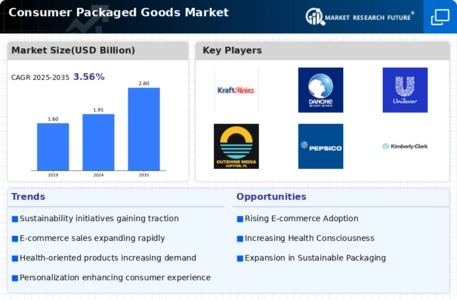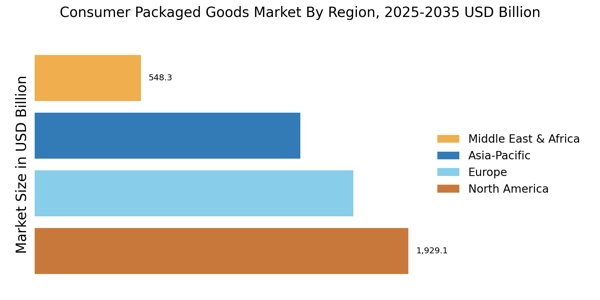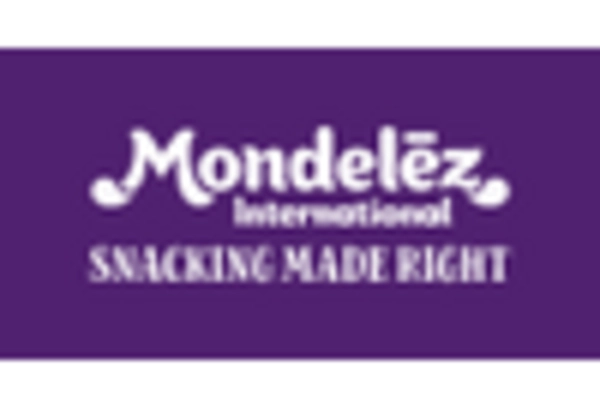E-commerce Growth
The rise of e-commerce has transformed the Consumer Packaged Goods Market, enabling brands to reach consumers directly through online platforms. In 2025, e-commerce sales in the sector are projected to account for approximately 25% of total retail sales, reflecting a shift in consumer purchasing behavior. This trend is driven by the increasing penetration of smartphones and internet access, allowing consumers to shop conveniently from their homes. Additionally, the proliferation of online grocery services has further accelerated this growth, as consumers seek the convenience of home delivery. As a result, companies are investing in digital marketing strategies and enhancing their online presence to capture this expanding market segment.
Technological Advancements
Technological advancements are reshaping the Consumer Packaged Goods Market, enhancing operational efficiency and consumer engagement. Innovations such as artificial intelligence and machine learning are being utilized to analyze consumer data, enabling companies to tailor their offerings more effectively. In 2025, it is anticipated that investments in technology within the sector will surpass 20 billion dollars, as companies seek to leverage data analytics for better decision-making. Moreover, advancements in supply chain management technologies are improving inventory management and reducing costs, allowing companies to respond more swiftly to market demands. This technological evolution is not only streamlining operations but also enhancing the overall consumer experience.
Health-Conscious Consumer Behavior
The Consumer Packaged Goods Market is witnessing a notable shift towards health-conscious consumer behavior. As individuals become more aware of the impact of their dietary choices on overall health, there is a growing demand for products that align with wellness trends. In 2025, it is estimated that the market for organic and natural products will reach over 100 billion dollars, indicating a significant consumer preference for healthier options. This trend is prompting manufacturers to reformulate existing products and introduce new lines that cater to health-conscious consumers. Furthermore, transparency in ingredient sourcing and labeling is becoming increasingly important, as consumers seek assurance regarding the quality and safety of the products they purchase.
Sustainability and Ethical Practices
Sustainability has emerged as a critical driver in the Consumer Packaged Goods Market, as consumers increasingly prioritize environmentally friendly products. In 2025, it is projected that sales of sustainable products will exceed 150 billion dollars, reflecting a strong consumer preference for brands that demonstrate a commitment to ethical practices. This trend is influencing companies to adopt sustainable sourcing, reduce packaging waste, and implement eco-friendly production processes. Additionally, consumers are more likely to support brands that engage in corporate social responsibility initiatives, further driving the demand for sustainable products. As a result, companies are re-evaluating their supply chains and marketing strategies to align with these evolving consumer values.
Changing Demographics and Consumer Preferences
The Consumer Packaged Goods Market is significantly influenced by changing demographics and evolving consumer preferences. As younger generations, particularly millennials and Gen Z, become a larger portion of the consumer base, their preferences for convenience, quality, and brand authenticity are reshaping the market landscape. In 2025, it is expected that these demographics will drive a substantial increase in demand for innovative and premium products. Additionally, the rise of urbanization is contributing to shifts in consumption patterns, as urban dwellers seek products that fit their fast-paced lifestyles. Companies are responding by diversifying their product lines and enhancing marketing strategies to resonate with these emerging consumer segments.


















Leave a Comment